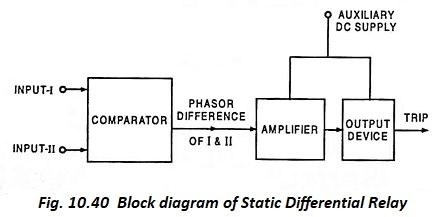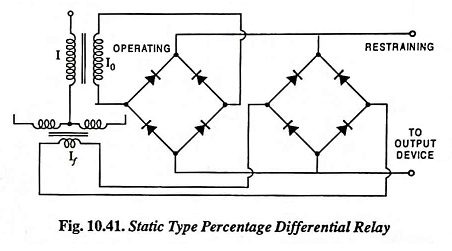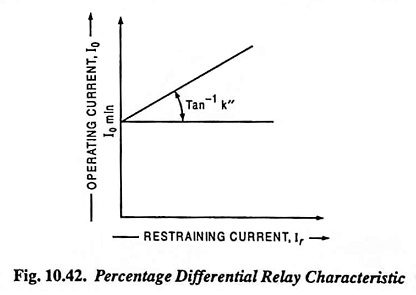Static Differential Relay Block Diagram and Working Principle:
The differential relay measures the phasor difference between two similar electrical quantities (voltage-voltage or current-current). The rectifier bridge amplitude comparator is the most common static form for applications as a differential relay element. The Static Differential Relay block diagram is shown in Fig. 10.40.
Inputs I and II are supplied to the comparator. The output of the comparator (phasor difference of inputs I and II) is amplified and used to operate the relay.
Application of Static Differential Relay:
The static differential relays are most commonly used for the protection of generators and transformers for any type of internal faults (two- and three-phase faults, earth faults with solidly grounded neutral or low resistance grounded neutral inter-turn faults).
Advantage of Static Differential Relay:
These relays are advantageous over electromagnetic differential relays as they are very compact, highly sensitive for internal faults and have absolute stability for heavy through faults, extremely short tripping times (20-50 ms) regardless magnitude of auxiliary voltage, accurate and absolutely stable tripping characteristic even for asymmetrical faults as each phase can have its own relay, low VA burden, inrush current proof characteristic even during high starting currents, inrush currents. The selection of auxiliary voltage is also easy.
A permanent magnet moving coil relay is usually employed as tripping device.
Static type percentage differential relay is shown in Fig. 10.41. The difference of the currents in the operating coil and restraining coil is fed to the output element for the relay operation. They relay operates when
where n0 and nr are the number of turns on the operating and restraining coils respectively and K0 and Kr the design constants and K’ the spring control torque constant.
At the threshold of operation K′ = K0n0 I0min
Now equation under threshold condition becomes
The above equation is an equation of a straight line of the form y = mx + c, the intercept c = I0min and the slop in = K”. The characteristic is shown in Fig. 10.42.
The differential current schemes do not react to the peak currents caused by overloads or swings, also due to dissimilarity in CTs, inrush magnetizing current in transformer protection.



